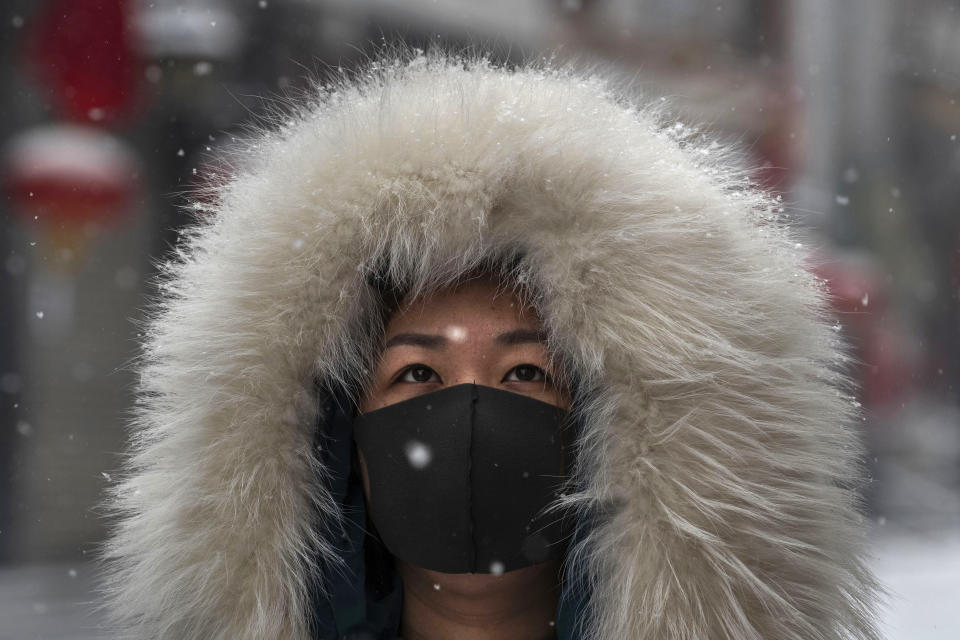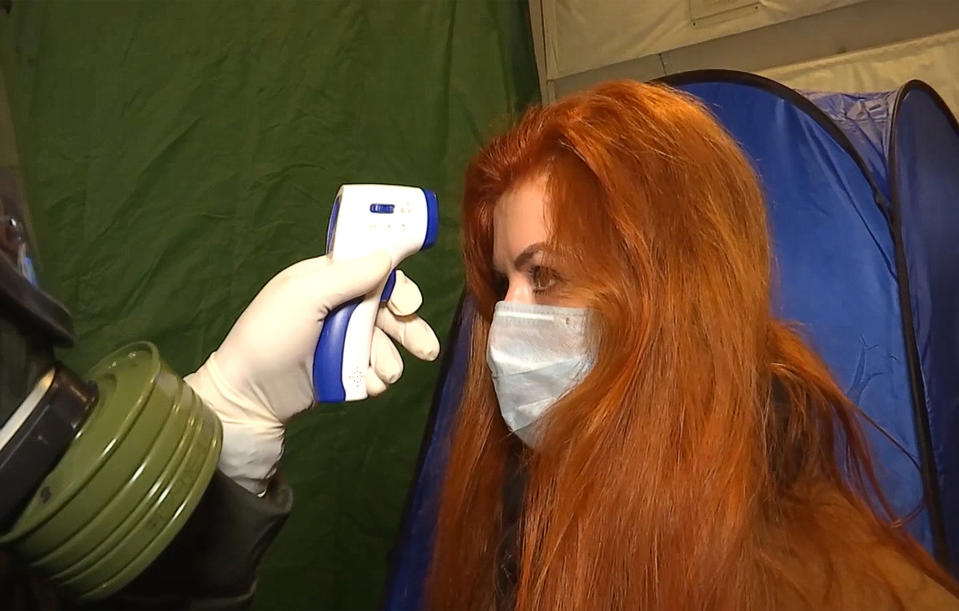Coronavirus likely spread beyond quarantine borders before China's ‘lockdown’ was in place

China’s deadly coronavirus likely spread beyond existing quarantined areas before the “lockdown” was put in place, research suggests.
Virtually unheard of at the start of the year, the new strain has reached every region of China after emerging from a seafood and live animal market in Wuhan, capital of Hubei province.
It has also crossed national borders into at least 25 countries, including the US, UK and Australia.
Authorities have confirmed more than 24,300 cases in China alone, with the death toll reaching 490 on Wednesday.
READ MORE: Coronavirus vaccine could be tested on animals 'next week'
With much of the country on “lockdown”, scientists from The University of Texas in Austin warn there is a “high probability” the disease had already spread.
Based on travel data for more than 300 cities, the team predict at least 128 cities in China had a “50% or greater risk” that someone exposed to the virus travelled there in the three weeks before the quarantine began on 22 January.
During this time, around 11,200 cases had likely arisen in Wuhan alone - 10 times more than reported, the scientists predict.
“This risk assessment identified several cities throughout China likely to be harbouring yet undetected cases of [coronavirus], and suggests early 2020 ground and rail travel seeded cases far beyond the Wuhan region quarantine,” they wrote in a paper that has been submitted to the journal medRxiv.
This comes after a team from the University of Hong Kong warned last week more than 75,000 people could have battled the infection just in Wuhan.
The Texas scientists also calculated a 99% chance at least one infected patient travelled to the cities Beijing, Guangzhou, Shenzhen and Shanghai before 23 January.
The quarantine has since expanded to cities with a total of 60 million people, they wrote.
The team estimate new cases doubled around once a week, with each infected person passing the virus to two others.
The Hong Kong scientists predicted each patient had the potential to infect 2.6 others.
There is some confusion over this, however.
On 25 January, scientists from Imperial College London estimated each patient in China infected between 1.5 and 3.5 people up to January 18.
Based on data collected from January 10 to 21, scientists from the Chinese University of Hong Kong predicted each patient could pass the virus onto between three and five people.
Coronavirus emerged at a particularly hectic time.
“Chunyun” - a 40-day period of “extremely high air and train traffic across China because of the lunar new year Spring Festival” - began on January 10.
“Given 98% of all trips during this period are taken by train or car, our analysis of air, rail and road travel data yields more granular risk estimates than possible with air passenger data alone”, study author Professor Lauren Ancel Meyers said.
“The quarantine will probably prevent future transmission out of Wuhan.
READ MORE: Coronavirus cannot be cured by drinking 'garlic water', experts stress
“However, introductions of the novel coronavirus had already occurred throughout China and the world by the time the quarantine started.”
Several Chinese cities with no reported cases still have a 99% chance an infected person visited, the results suggest.
These include Fushun, Laibin and Chuxiong, which each have a population of more than two million.
Since making the “jump” from an unknown animal to humans, the virus can spread from person to person via coughing or sneezing.
Chinese authorities confirmed patients are infectious before tell-tale flu-like symptoms develop, like fever and breathlessness.

What measures are in place to control the new coronavirus?
Coronavirus was declared a “global emergency” by the World Health Organization (WHO) on 31 January.
Under the International Health Regulations act of 2005, all 196 member states of the WHO are legally bound to help control the disease.
Before this Wuhan - with its 11m residents - had flights, trains, buses, subways and ferries suspended.
People who live in Hubei were reportedly also told to work from home.
Countries all over the world have advised travellers to avoid any non-essential trips to China.
Several international airlines have suspended flights in and out of the country, the second-largest economy in the world.
READ MORE: Coronavirus 'could share 89% of its DNA with Sars' – supporting theory it started in bats
Companies like Google, Ikea and Starbucks - which have a presence in China - temporarily “shut up shop”.
Locals have reportedly been told to avoid crowds and wear masks.
Libraries, museums and theatres cancelled exhibitions, while cafés and cinemas have closed.
The Chinese Football Association announced it is postponing all games scheduled for this season.
Countries around the world are screening travellers for signs of infection.
Critics argue, however, it can take days for symptoms to develop, allowing newly-infected passengers to be missed, Yahoo UK reported.
When it comes to treatment, 11 public venues - including sports arenas - in Wuhan have been turned into makeshift hospitals to provide an additional 10,000 beds, according to the BBC.
Two new hospitals have already been built there.
How does the new coronavirus kill patients?
In the most severe cases, victims succumb to pneumonia.
This comes about when a respiratory infection causes the alveoli (air sacs) in the lungs to become inflamed and filled with fluid or pus, according to the American Lung Association.
The lungs then struggle to draw in air, resulting in reduced oxygen in the bloodstream.
“Without treatment the end is inevitable,” said the charity Médecins Sans Frontières.
“Deaths occurs because of asphyxiation.”
The US Centers for Disease Control and Prevention (CDC) has warned there is no specific treatment for coronaviruses.
If the infection triggers pneumonia, doctors work to combat the complication.
Pneumonia is generally caused by bacteria, which tend to respond to antibiotics.
When a virus is to blame – like 2019-nCoV – it may be treated via “antiviral medication”, according to the American Lung Association.
Professor Peter Horby from the University of Oxford claims, however, there is “no effective anti-viral”, with treatment being “supportive”.

